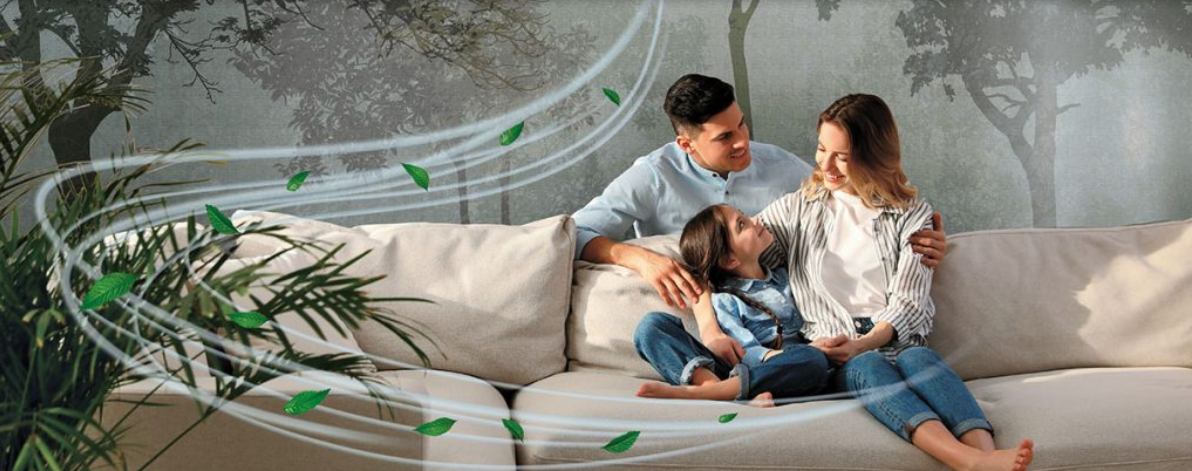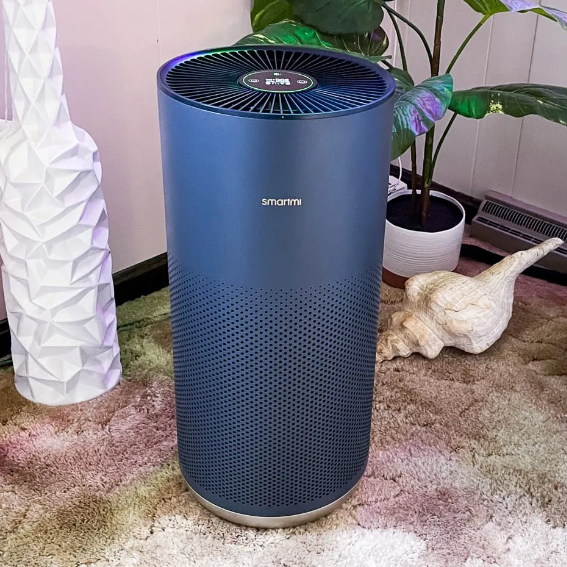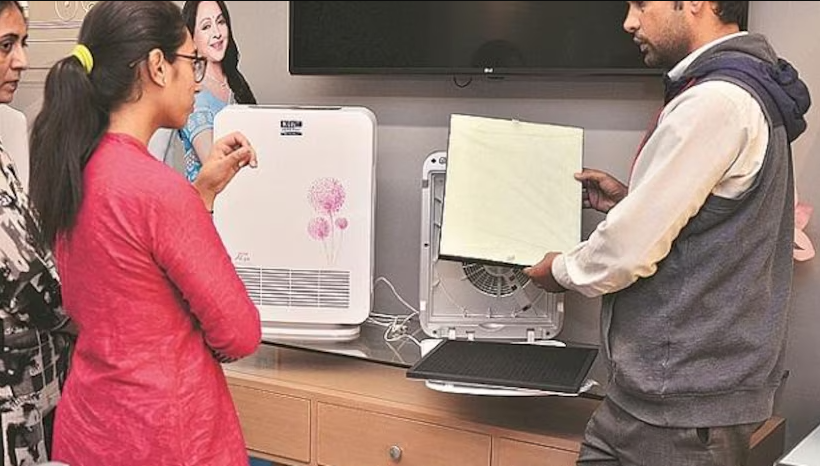8 Tips for Buying a Used Air Purifier | Breathe Clean Air on a Budget

Content
Air purifiers have become essential appliances for maintaining a healthy indoor environment, especially for those with allergies or respiratory conditions. Buying a used air purifier can be a cost-effective solution to improve air quality without spending a fortune. However, it’s important to know what to look for to ensure you get a reliable unit that will function properly. This short given data provides essential tips for buying a used air purifier, helping you make an informed decision that suits your needs and budget. Quick Review in less time!
1 Inspect the Condition

Check for Physical Damage
Examine the purifier for any visible damage, such as cracks or dents.
Inspect the Filters
Ensure the filters are clean and in good condition, with no signs of excessive wear.
Test the Fan and Motor
Run the purifier to check that the fan and motor are functioning smoothly.
Look for Signs of Mold or Odors
Smell the unit for any musty odors that could indicate mold or poor maintenance.
Detailed Description
When purchasing a used air purifier, start by thoroughly inspecting the unit for any physical damage. Cracks, dents, or scratches can indicate rough handling or previous issues that may affect the purifier’s performance. The condition of the filters is also crucial. Many air purifiers use HEPA or activated carbon filters, which need to be clean and in good condition to effectively remove airborne particles and odors. If the filters look excessively worn or dirty, you may need to replace them, adding to the overall cost. Test the fan and motor by turning on the purifier to ensure it runs smoothly without any unusual noises. Finally, check for any musty or unpleasant odors emanating from the unit, as these could indicate mold growth or inadequate cleaning by the previous owner. A thorough inspection can help you avoid potential problems and ensure that the air purifier will work effectively.
2 Assess the Size and Coverage Area

Check the CADR Rating
Ensure the purifier's Clean Air Delivery Rate (CADR) matches your room size.
Evaluate Room Size Compatibility
Confirm that the purifier is suitable for the room size where it will be used.
Consider Portability
Look for a unit that is easy to move if you plan to use it in different rooms.
Check for Adjustable Fan Speeds
Verify that the purifier has adjustable fan speeds to control noise and efficiency.
Detailed Description
The size and coverage area of an air purifier are critical factors to consider, especially when purchasing a used unit. The Clean Air Delivery Rate (CADR) is a key metric that indicates how well the purifier can clean the air in a specific room size. Ensure that the CADR rating is appropriate for the room where you intend to use the purifier. Additionally, check that the purifier's coverage area matches your needs. If you plan to use the purifier in different rooms, consider its portability—units with handles or lightweight designs are easier to move around. Adjustable fan speeds are also important, as they allow you to control the noise level and energy consumption based on your needs. By assessing the size and coverage area, you can ensure the air purifier will effectively clean the air in your desired space.
3 Consider the Filtration Technology

HEPA Filters
Understand the benefits of HEPA filters for capturing small particles.
Activated Carbon Filters
Learn about activated carbon filters for removing odors and gasses.
UV-C Light Technology
Consider UV-C technology for additional germ-killing capability.
Filter Replacement Costs
Check the cost and availability of replacement filters for the unit.
Detailed Description
Understanding the filtration technology used in an air purifier is essential, as it determines the unit's effectiveness in removing different types of pollutants. HEPA filters are highly effective at capturing small particles like dust, pollen, and pet dander, making them ideal for allergy sufferers. Activated carbon filters are excellent for removing odors, smoke, and volatile organic compounds (VOCs), making them a good choice for homes with pets or smokers. Some purifiers also include UV-C light technology, which can kill bacteria and viruses, adding an extra layer of protection. However, it's important to consider the cost and availability of replacement filters, as they will need to be replaced periodically. Researching the filtration technology and ongoing maintenance costs will help you choose a used air purifier that meets your specific air quality needs.
4 Check the Features

Air Quality Sensors
Look for purifiers with sensors that monitor and display air quality levels.
Automatic Mode
Ensure the unit has an automatic mode that adjusts fan speed based on air quality.
Timer Function
Consider a timer function for setting operation periods.
Remote Control or App Compatibility
Check for remote control or smartphone app compatibility for convenient operation.
Detailed Description
When selecting a used air purifier, the features it offers can significantly impact its usability and effectiveness. Air quality sensors are a valuable feature, as they monitor the air and provide real-time feedback on its cleanliness. This allows the purifier to adjust its settings automatically, ensuring optimal performance. An automatic mode is particularly useful for maintaining air quality without constant manual adjustments. A timer function can also be a helpful feature, allowing you to set specific operation periods, such as running the purifier only at night or during high-pollution times. Therefore, consider whether the purifier comes with a remote control or is compatible with a smartphone app for added convenience. By checking these features, you can choose a used air purifier that not only meets your air quality needs but also fits seamlessly into your lifestyle.
5 Verify the Brand and Model

Research Reputable Brands
Focus on well-known brands with a track record of producing reliable air purifiers.
Check for Model-Specific Reviews
Read reviews for the specific model to identify any common issues or complaints.
Confirm Availability of Parts
Ensure that replacement parts and filters are readily available for the model.
Investigate the Warranty
Check if the unit is still under warranty or if an extended warranty is available.
Detailed Description
The brand and model of an air purifier can significantly impact its performance, durability, and ease of maintenance. When purchasing a used air purifier, it's essential to focus on reputable brands known for producing reliable and effective units. Brands like Dyson, Honeywell, and Blueair have a solid reputation in the air purifier market, so starting your search with these names can be beneficial. Once you've identified a specific model, take the time to read model-specific reviews from other users. These reviews can provide insights into the purifier's long-term performance, common issues, and user satisfaction. Moreover, verify the availability of replacement parts and filters for the model you're considering. Some older or less common models may have parts that are difficult to find or expensive to replace, which could increase the cost of ownership over time. It's also wise to investigate whether the air purifier is still under warranty or if an extended warranty option is available. While the original warranty may no longer be valid for a second-hand purchase, some manufacturers offer extended warranties or service plans that can provide peace of mind. By verifying the brand, model, and availability of parts, you can ensure that your used air purifier will continue to serve you well for years to come.
6 Understand the Maintenance Requirements

Filter Replacement Frequency
Determine how often the filters need to be replaced and their cost.
Cleaning the Unit
Check how easy it is to clean the unit and its components.
Ongoing Maintenance Costs
Consider the total cost of ownership, including maintenance and filter replacements.
User Manual Availability
Ensure the user manual is available for reference on proper maintenance procedures.
Detailed Description
Maintenance is a crucial aspect to consider when buying a used air purifier, as proper upkeep ensures the unit's longevity and effectiveness. Start by understanding the filter replacement frequency—most air purifiers require filter changes every six to twelve months, depending on usage and air quality. Calculate the cost of these replacements, as they contribute to the ongoing cost of ownership. So, assess how easy it is to clean the unit and its components. Some air purifiers have washable pre-filters or other parts that require regular cleaning to maintain efficiency. Ongoing maintenance costs should be factored into your decision-making process. In addition to filter replacements, consider any other parts that may need periodic attention or replacement, such as UV-C bulbs in purifiers equipped with germicidal features. Having access to the user manual is also important, as it provides guidance on proper maintenance procedures and troubleshooting. If the manual isn't available, check if you can find it online or request a copy from the manufacturer. Understanding the maintenance requirements will help you keep your air purifier in top working condition, ensuring it continues to provide clean air.
7 Test the Unit Before Purchase

Run the Purifier
Test the purifier to ensure it operates quietly and efficiently.
Check All Functions
Verify that all features, such as timers, automatic mode, and air quality sensors, are working correctly.
Listen for Unusual Noises
Pay attention to any strange sounds that could indicate mechanical issues.
Ask About the Unit's History
Inquire about the previous owner's usage habits and maintenance history.
Detailed Description
Before finalizing the purchase of a used air purifier, it's important to test the unit to ensure it is in good working condition. Start by running the purifier and observing its operation. The unit should run smoothly and quietly, without any unusual noises like grinding or rattling, which could indicate mechanical problems. Take the time to test all of the purifier's features, including timers, automatic mode, air quality sensors, and any other functionalities the unit offers. This ensures that you are getting a fully functional device that meets your expectations. Thus, testing the unit, ask the seller about the purifier's history. Understanding how the previous owner used and maintained the unit can provide valuable insights into its current condition. For example, a purifier that was used in a pet-free, smoke-free environment and was regularly maintained is likely to be in better condition than one that wasn't. By thoroughly testing the unit and gathering information about its history, you can make a more informed decision and avoid potential issues after the purchase.
8 Negotiate the Price

Research Market Prices
Compare prices for similar used models online to ensure you’re getting a fair deal.
Consider the Condition
Factor in the condition of the unit when negotiating the price.
Account for Maintenance Costs
Include future maintenance costs in your budget and use them as a negotiation point.
Be Prepared to Walk Away
If the seller isn’t willing to negotiate or the price seems too high, be ready to walk away.
Detailed Description
Negotiating the price of a used air purifier is a critical step in ensuring you get the best possible deal. Start by researching market prices for similar models in both new and used conditions. Websites like eBay, Craigslist, or other online marketplaces can give you a good sense of what others are paying for similar units. When negotiating, take the condition of the purifier into account—if the unit has visible wear or requires immediate filter replacements, use these factors to justify a lower price. Future maintenance costs should also be part of your negotiation strategy. If the filters are nearing the end of their lifespan or if the unit requires other maintenance soon after purchase, factor these costs into your budget and use them as leverage in negotiations. Remember that it’s okay to walk away if the seller isn’t willing to offer a reasonable price—there are plenty of other used air purifiers on the market, and waiting for the right deal could save you money in the long run. By negotiating effectively, you can ensure that your purchase is not only affordable but also offers good value for money.
Closing Remarks
Buying a used air purifier can be a smart and economical choice if you know what to look for. By carefully inspecting the unit, understanding its features, and considering ongoing maintenance costs, you can find a reliable air purifier that fits your budget. Always test the unit before purchasing and don’t hesitate to negotiate the price. With the right approach, you can enjoy clean air at a fraction of the cost of a new purifier.
Faqs
What should I look for when buying a used air purifier?
How often do air purifier filters need to be replaced?
Is it safe to buy a used air purifier?
Can I negotiate the price of a used air purifier?
What are the key features to consider in a used air purifier?
Leave a Comment
